 Image search results - "hawai" Image search results - "hawai" |
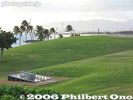
Ehime Maru Memorial in Kakaako Waterfront Park, Honolulu えひめ丸慰霊之碑The memorial is on a slope with a good view of the ocean. It was indeed a suitable place for such a memorial.
|
|
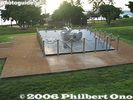
The memorial was unveiled on Feb. 9, 2002, a year after the accident.
|
|
|
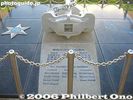
On Feb. 9, 2001, a small Japanese fisheries training boat from Uwajima, Ehime Prefecture was struck by the USS Greeneville submarine as it bolted to the surface off the coast of Honolulu, Hawaii. Nine Japanese high school students, teachers, and crewmen died aboard the Ehime Maru. A year later, a waterfront memorial was built in Honolulu.
|
|

Names of the nine Japanese who died
|
|

Inscription in English
|
|

Inscription in Japanese
|
|
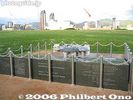
I hope the former submarine commander Scott Waddle comes here on each anniversary of the accident and pray for their souls.
|
|
|
|

June 9, 2007. Hula dancers rush to Pukari Sanbashi Pier where the Hokule'a canoe is to dock. ぷかりさん橋
|
|
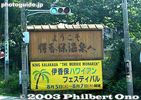
Ikaho is also a sister city of Hawaii island. During Aug. 5-7, 2003, Ikaho hosted the 7th King Kalakaua Merrie Monarch Hawaiian Festival featuring hula performances by numerous Japanese hula groups.
|
|

A crowd of a few hundred on hand to greet Hokule'a's arrival.
|
|
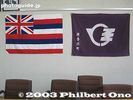
In the evenings, Hawaii's top hula halau (winner of the Merrie Monarch Festival in Hawaii) performed as the festival's main event. Photo: Flags of Hawaii and Ikaho town (merged with Shibukawa in 2006).
|
|

People crowd the waterfront near Pukari Sanbashi Pier.
|
|
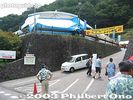
Town parking lot with a makeshift stage and main venue of the festival. The "Merrie Monarch" refers to King David Kalakaua who reigned over the Hawaiian Kingdom 1874-1891. He promoted hula in Hawaii as well as Japanese immigration to Hawaii.
|
|

People crowd the waterfront near Pukari Sanbashi Pier.
|
|
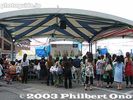
Canopy for the spectators fronting the main outdoor stage.
|
|

Hokule'a already in sight well before 11 am when it was scheduled to dock.
|
|
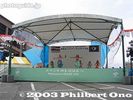
Main stage where many Japanese hula troupes performed during the day for three days. Free admission.
|
|

Hokule'a and escort ship Kama Hele. What makes this canoe so special and famous is that it was used to sail from Hawaii to Tahiti (and many other places) without any modern navigational instruments.
|
|
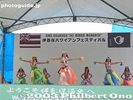
Tahitian dances were also performed.
|
|

They only referred to the sun, moon, the stars, and ocean waves to navigate through the vast Pacific Ocean or Polynesia. This is called celestial navigation. Extremely few people can do this, and the Hawaiians are learning this skill of long-ago.
|
|
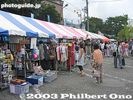
Hawaiian souvenirs for sale.
|
|

They wanted to prove that the original native Hawaiians were able to sail between Tahiti to Hawaii on purpose, and that they did not land on Hawaii by accident.
|
|
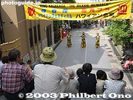
Ikaho is famous for the Stone Steps lined with shops. A section of it also served as a second hula stage during the day.
|
|

Hokule'a and Yokohama Bay Bridge in the background.
|
|

Hula on the Stone Steps 石段街
|
|

One sail unraveled.
|
|
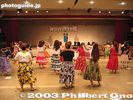
Hula workshops are also offered during the day at cost. A famous kumu hula teacher from Hawaii teaches the class.
|
|

Nearing Pukari Sanbashi Pier. The question was, which side of the pier would it dock? (Was going the other side so I rushed over to the other side.)
|
|
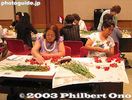
Other workshops are held such as ukulele lessons and a lei-making class.
|
|

Hokule'a nears the dock.
|
|
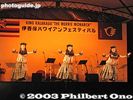
In the evenings, the overall winner of the annual Merrie Monarch Festival in Hawaii performed on stage. In 2003, it was Hula Halau 'O Kamuela from Oahu. They performed both the ancient hula kahiko dances (pictured here) and modern auana dances in Ikah
|
|

A rope is thrown to the dock from Hokule'a.
|
|
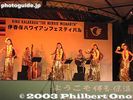
The Ikaho hula festival is officially sanctioned by The Merrie Monarch Festival, held in spring in Hilo, Hawaii. It is the most important and prestigious hula competition.
|
|

Hokule'a arrives right on schedule at 11 am on June 9, 2007. Yokohama is its last stop.
|
|
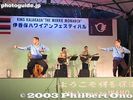
Hula is also performed by men. These photos were taken during the 7th Ikaho Hawaiian Festival (Aug. 5-7, 2003).
|
|

Hula dancers
|
|
|

Conch shell blowers signal the canoe's arrival.
|
|
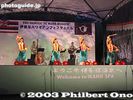
They wore a variety of colorful costumes and used various hula instruments such as these frayed bamboo sticks called Pūʻili.
|
|

Pulling Hawaii's most famous canoe to dock.
|
|
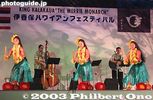
Modern hula dances such as this one is mainly for tourist entertainment.
|
|

Under overcast skies, Hokule'a docks.
|
|
|
|
|
|

Escort ship (powered by a Yanmar engine) Kama Hele also docks soon afterward.
|
|
|
|

Koinobori carp streamers adorn Hokule'a. A great Japanese touch.
|
|

After the bamboo sticks, the girls used a gourd drum called ipu.
|
|
|
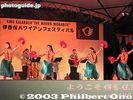
Finally, they use feathered gourd rattles called Ulīʻulī.
|
|

Escort ship Kama Hele flying the Japanese, Hawaiian, and Yanmar flags at Yokohama.
|
|
|

Welcome banner from Yanmar
|
|
|
|

Crowd on the waterfront near the pier.
|
|

They are professional hula dancers, some of the best in the world.
|
|

Hokule'a crew members
|
|

The kumu hula is Kamana'o Anson Kauionalani or Kaui for short. He does a solo dance here. The music was performed by a wonderful Hawaiian trio called 'Ale'a.
|
|

The Royal Order of Kamehameha I take part in arrival ceremonies. 入港式
|
|
|

Hokule'a arrival ceremonies
|
|

Captain Bruce Blankenfeld places a lei on the bow.
|
|

Hula dancers
|
|

Hula dancers take part in arrival ceremonies.
|
|
|

Hokule'a crew dance on the canoe.
|
|

Royal Order of Kamehameha I
|
|

Royal Order of Kamehameha I wear red and gold capes.
|
|

Royal Order of Kamehameha I leave the pier.
|
|
|
|

Conch shell blower
|
|

Crew members hug each other.
|
|

Former Yokozuna Akebono (blue shirt) and his family were also on the pier. (Wife and daughter in orange.)
|
|

Nainoa Thompson and other crew members get off the boat. Nainoa was on board, but was not part of the crew who brought the canoe to Yokohama.
|
|
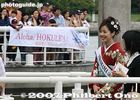
Miss Yokohama also took part in the arrival ceremonies.
|
|

Arrival ceremony ends and people start to leave the pier.
|
|

Future Hokule'a Captain, Ka'iu Murphy.
|
|

All the crew members met applause and handshakes.
|
|

All the crew members were very friendly to all. This is Captain/Navigator Chadd Paishon.
|
|
|

Kimo
|
|

Captain Blankenfeld who piloted the canoe to Yokohama.
|
|

Finally, Nainoa Thompson makes his way from the pier and into the crowd.
|
|

Nainoa Thompson
|
|

Nainoa shook every single hand.
|
|

He shook hands with EVERYBODY and ANYBODY.
|
|
|

The crowd was thrilled to be so close to this man full of aloha.
|
|

People line up to shake Nainoa's hand or get his autograph or take his picture.
|
|
|
|

Nainoa has a habit of crouching on his knees so he can use his knee as a backing to sign autographs.
|
|

"Here you go!"
|
|

Plus a handshake for this little guy...
|
|

He never refused to sign an autograph.
|
|
|

He never refused to shake a hand.
|
|

This woman put a small necklace on him.
|
|

I have never seen anyone who shook everybody's hand, signed autographs for everyone, and posed for all photographers. ナイノア・トンプソン
|
|

Finally at the end, a little girl's artwork on a sheet of cloth catches his eye.
|
|

He poses with the girl.
|
|

He was so touched and impressed that he gave her a hug.
|
|

He actually wanted her to keep her magnificant work of art, but she wanted him to have it.
|
|

The little girl was in awe and speechless.
|
|

He accepts the little girl's impressive gift.
|
|

He folds the sheet neatly and carries it with him to a press conference which he was late in attending. An ideal Goodwill Ambassador.
|
|

June 10, 2007. A formal welcoming ceremony was held the next day on an outdoor terrace near the pier. Unfortunately, it was a rainy day and attendance was much smaller than the day before. 入港歓迎セレモニー
|
|

Captain Blankenfeld receives a gift.
|
|

The ceremony included hula chanting and dancing.
|
|
|
|
|

A local taiko troupe give a spectacular performance. 学校法人国際学園 星槎国際高等学校
|
|
|
|

In return, the crew performs the haka dance.
|
|

A small crowd watch the welcome ceremony. パシフィコ横浜国立大ホール前テラス
|
|

Hula dancers watch the ceremony
|
|

Nainoa Thompson gives a thank you speech with Hokule'a's captains.
|
|
|
|
|
|

Nainoa Thompson gave a touching speech about Japan-Hawaii friendship, their rediscovery of Japan ("Japan is not just Tokyo"), and Hokule'a's mission.
|
|
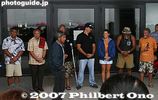
Nainoa introduces the rest of the crew and future Hokule'a captains being groomed to take over.
|
|
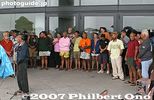
Hokule'a crew on stage.
|
|
|
|

Hokule'a at Yokohama
|
|

Hokule'a and Kama Hele in Yokohama, June 10, 2007
|
|
|

Pukari Sanbashi Pier. Hokule'a can be seen on the left. On the right is another pier for sightseeing boats. The building in the middle is a resthouse.
|
|

Hawai Onsen hot spring is on the western shore of Lake Togo, a small brackish lake in Yurihama town in central Tottori Prefecture. A 15-min. bus ride from JR Kurayoshi Station at this bus stop.
|
|

Lake Togo is a small brackish lake connected to the Sea of Japan through a 2 km river. The perimeter is 12 km, and there's a walking path. There are no swimming beaches.It is a rare lake in Japan to have hot spring water gushing out of the center of the lake. The warm water creates a misty lake surface in winter.
|
|

The lake has Togo Onsen on the south shore, while the smaller Hawai Onsen is on the western shore. The lake has been in its current shape since at least the 13th century.
|
|

Directional sign seen from the bus to Hawai Onsen.
|
|

Hawai Onsen bus stop has this foot bath.
|
|

Hawai Onsen was built on reclaimed land jutting over the lake where the natural hot spring water gushed out of the lake bottom. This reclaimed land now has a number of inns where guests can enjoy the hot spring water. Since "Hawai" sounds the same as "Hawaii", it has associated itself with Hawaii by holding a hula festival in July.
|
|

Near Hawai Onsen is a nice lakeside park.
|
|
|
|
|

Lake Togo on an overcast, winter day.
|
|

Walking path around Lake Togo.
|
|

Manhole for Yurihama town, Tottori Prefecture. Famous for Hawai Onsen, Togo Onsen, and Lake Togo.
|
|

This lakefront space is used for the Hawaiian festival held in July.
|
|

At the tip of the Hawai Onsen's reclaimed land jutting into the lake is an inn named Sennentei, one of the major inns.
|
|

Hawai Onsen got its start in 1843 when local fishermen noticed warm spring water gushing out the lake bottom. The local Tottori lord gave them permission to utilize the hot spring water to make it easier to boil water, etc.
|
|

In 1866, a former samurai stuck bamboo pipes into the lake bottom and was able to extract the hot spring water into a barrel on a boat above. It was an open-air spring bath on the rocking boat. This continued for some years until they finally reclaimed some land offshore in 1886 and drew the hot spring water directly below and even built a ryokan inn above. This was the start of commercial operations as "Asozu Onsen" (浅津温泉).
|
|

Bridge to Sennentei. I decided to bathe in their outdoor bath. Most of the inns have baths for visitors costing up to ¥1,000. 千年亭
|
|

Sennentei had a nice New Year's decoration with kadomatsu and tanuki. 千年亭
|
|

Sennentei had a nice New Year's decoration with kadomatsu and tanuki. 千年亭
|
|

Inside, Sennentei had a nice flower arrangement.
|
|

Sennentei lobby.
|
|
|
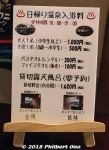
Bathing fees for non-staying guests. ¥1,000 for adults. Towels for rent too.
|
|
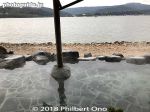
Men's outdoor bath at Sennentei. (Segregated) Hawai Onsen, Tottori. 千年亭
|
|
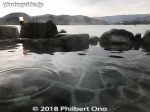
Men's outdoor bath at Sennentei. Nice view of the lake. Hawai Onsen, Tottori. 千年亭
|
|

Gift shop at Sennentei.
|
|

Gift shop at Sennentei sells Hawaiian chocolate.
|
|

Another large inn at Hawai Onsen is Bokoro. 望湖楼
|
|

This onsen had several name changes. In 1927, "Asozu Onsen" was renamed "Shin-Togo Onsen" (新東郷温泉). In 1978, it was renamed "Hawai Onsen" (羽合温泉). In 1998, they changed the Japanese name to はわい温泉 replacing the "hawai" kanji with hiragana.
|
|

Gift shop near the bus stop back to Kurayoshi Station.
|
|

Inside the Gift shop.
|
|

Autographed daruma.
|
|

Local souvenirs.
|
|

Yurihama poster
|
|

"Hawai" branch of this shop.
|
|

Map of the Hawai-cho area.
|
|
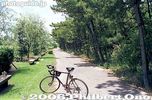
Hawai Rinkai Koen Beach Park in northern Lake Togo when I once cycled here. 羽合臨海公園
|
|
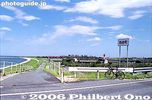
Border of Hawai-cho (now part of Yurihama city).
|
|
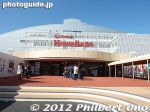
Main entrance to Spa Resort Hawaiians, a huge water park and onsen hot spring amusement facility built in 1966. I visited for the first time shortly after they reopened on Feb. 8, 2012.
|
|
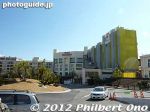
One wing of Hotel Hawaiians was still undergoing repairs to cracks.
|
|
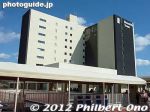
The new Monolith Hotel opened on Feb. 8, 2012.
|
|

After completing earthquake repairs, the water park re-opened on Feb. 8, 2012. Admission was half price.
|
|

Layout of Spa Resort Hawaiians.
|
|
|
|
|
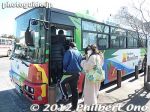
From JR Yumoto Station, free shuttle buses run to Spa Resort Hawaiians.
|
|

The huge water park at Spa Resort Hawaiians. All the water is from a hot spring. The pool water is lukewarm.
|
|
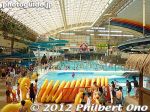
The whole water park is heated to tropical temperatures even when it is freezing outside.
|
|
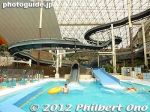
The water slides cost extra money. 200 yen per slide.
|
|
|
|
|
|
|
|
|
|
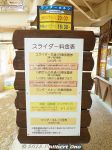
The water slides cost extra money. 200 yen per slide or a day pass for 2,200 yen.
|
|
|
|

Wading pool.
|
|
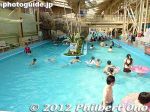
Wading pool.
|
|
|

Besides the pools, there are real hot spring baths where you have to go in naked. Cameras not allowed though.
|
|

Spring Park, a lukewarm hot spring pool.
|
|

Spa Garden Pareo has outdoor pools and a sauna. In winter, the air is freezing cold.
|
|
|
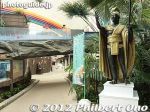
Statue of King Kamehameha even!
|
|

Hula lesson for kids at the Beach Theater in the Water Park.
|
|
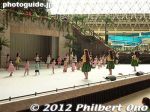
Hula lesson for kids at the Beach Theater in the Water Park.
|
|
|
|
|
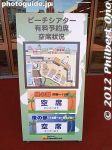
Beach Theater shows are free, but they also sell tickets for the best seats for ¥600 to ¥800.
|
|

Colored seats are reserved and cost extra.
|
|
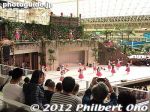
Hula Girl Polynesian Revue at 1:30 pm to 2:15 pm at the Beach Theater.
|
|
|
|
|
|
|
|
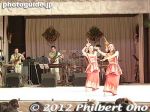
The live band were all Japanese. All the dancers were Japanese and most are from Fukushima.
|
|
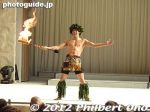
Fire knife dancers are the highlight and crowd pleasers. They are Japanese, but well-trained and highly skilled with the fire.
|
|
|
|
|
|
|
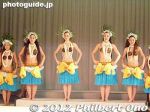
Great dancers and great show!
|
|
|
|
|
|
|
|
|
|
|
|
|
|
|
|
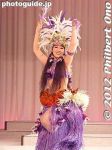
This is Maluhia Yukari, the leader of the hula girls. She was a pivotal in taking the lead following the 3/11 disasters and promoting Spa Resort Hawaiians on tour. She retired in June 2012. マルヒア由佳理
|
|
|
|
|
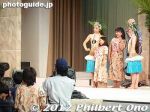
At the end of the show, people who paid for reserved seats could have their picture taken with the hula girls.
|
|
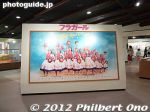
The Hula Museum shows the history of Spa Resort Hawaiians first established as Joban Hawaiian Center in 1966.
|
|
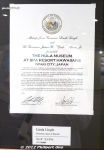
Congratulatory letter from the Governor of Hawaii, Linda Lingle, upon the opening of the Hula Museum.
|
|
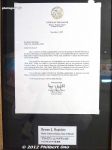
Congratulatory letter from the mayor of Kauai upon the opening of the Hula Museum.
|
|

How Spa Resort Hawaiians got its start.
|
|
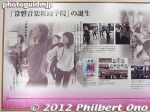
Recruitment of hula girls.
|
|
|
|
|
|
|
|
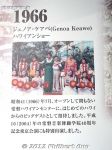
Shortly after Joban Hawaiian Center opened in 1966, famous singer Aunty Genoa Keawe from Hawaii performed here.
|
|
|
|
|
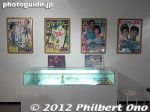
Hawaiian movie posters.
|
|
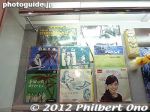
Hawaiian records by Japanese artists.
|
|
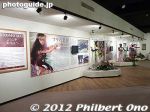
The second room of the Hula Museum introduces hula.
|
|
|
| 815 files on 4 page(s) |
1 |
 |
|